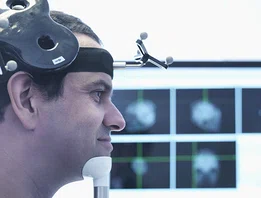


clinical research
Helping Patients Pass the Smell Test
Helping Patients Pass the Smell Test
As COVID-19 demonstrated, post-viral olfactory dysfunction is nothing to sneeze at.
Usually presenting as hyposmia—significantly reduced sense of smell—anecdotal evidence suggested that loss of taste was more prevalent with COVID-19, but since 80% of flavor distinctions are a result of neurological interpretations of smell; a significantly reduced sense of smell was, in fact, more prevalent. While it is less common with more recent variants, it is estimated that 27 million people still have long-term olfactory dysfunction from SARS-CoV-2.
of patients experience
hazardous events
due to smell loss1
They are unable to smell2
gas, smoke or volatile chemicals

A common hazardous event is
food poisoning
of patients experience
hazardous events
due to smell loss1
They are unable to smell2
gas, smoke or volatile chemicals

A common hazardous event is
food poisoning
The sheer number of COVID-19 patients affected by post-viral hyposmia brought the problem to the fore, but it isn’t unique to SARS-CoV-2. Numerous viruses are implicated in this condition including influenza, adenovirus, parainfluenza, RSV, coxsackievirus, poliovirus, enterovirus, and herpesvirus. Before the pandemic, approximately 4 million people in the U.S. alone suffered from the condition.
Make no mistake, those with chronic hyposmia do suffer. Being cut off from smell and taste affects many aspects of daily life, including memory—scent is the single biggest memory trigger—as well as the ability to fully participate in social gatherings, many of which are centered around food. It also prevents one from detecting smoke, gas leaks or spoiled food.
A great nose may be an index of a great soul.
Edmond Rostand
Cyrano de Bergerac
A great nose may be an index of a great soul.
Edmond Rostand
Cyrano de Bergerac
Houston Methodist is partnering with Cyrano Therapeutics to conduct a Phase 2, multicenter, double-blinded, placebo-controlled study—Cyrano Flavor—to investigate intranasal theophylline (CYR-064) for the treatment of persistent post-viral hyposmia. Mas Takashima, MD, FACS, Sylvia and James E. Norton Distinguished New Century Chair in Otolaryngology, and Professor and Chair, Department of Otolaryngology, Head and Neck Surgery, is the study PI with Omar Ahmed, MD, Assistant Professor as Co-PI. Overseeing the study is Krista Geoffrion, Director of Clinical Operations at Cyrano.
Previous oral administration of theophylline for hyposmia has been riddled with problems. Inefficient systemic use requires a high dose and slow response times necessitate long-term use to reach the therapeutic window, which exacerbates the side effects and drug interactions often making it intolerable. To overcome these obstacles, Dr. Takashima is using Cyrano’s intranasal formulation in this clinical trial. “Intranasal use applies the drug locally, removing systemic side effects and dangerous drug interactions,” he said.
To increase efficacy, Cyrano has also developed its own intranasal delivery sprayer, which produces a fine mist that facilitates drug delivery to the upper reaches of the nasal cavity rather than dripping out the nose. This combination—and collaboration—is expected to provide more effective and safer treatment for those suffering from post-viral hyposmia.
Heather Lander, PhD
July 2024
Related Articles








